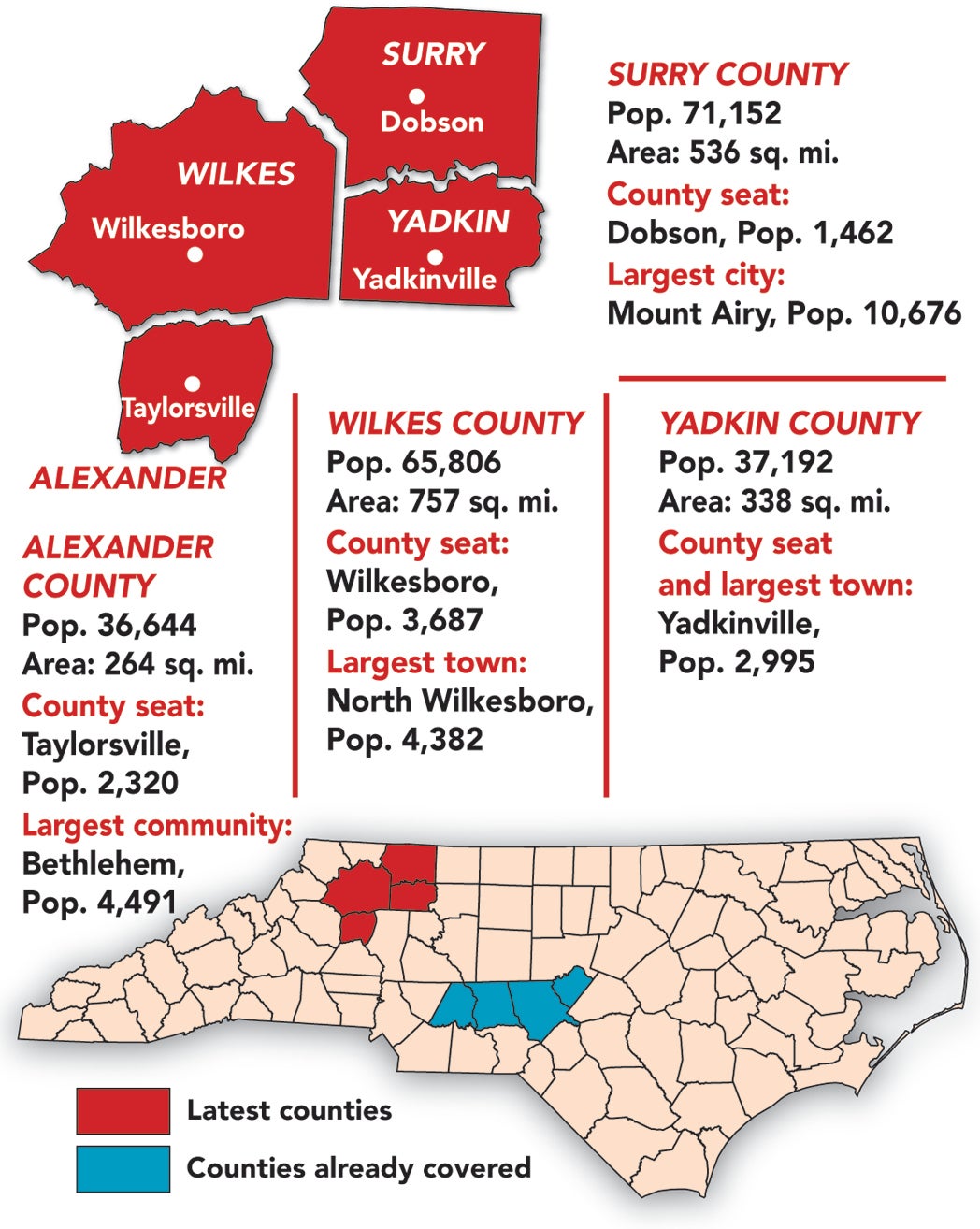DAVID FREEZE COLUMN: Adventure starts chilly for Freeze
Editor’s Note: David Freeze is a runner, running coach and long-distance cyclist from China Grove in Rowan County. He has started a challenge to run a few miles in every county seat in all 100 N.C. counties.

I had a free day on Wednesday, so I loaded up my notebook, iPad, oversized road atlas and several layers of running clothes, then headed north. Wednesday morning’s low of 25 degrees made me wonder if north was the right direction, but all worked out.

David Freeze
My first stop was Taylorsville, county seat of Alexander County, and in the foothills of the Brushy Mountains. The town was formed in 1847 and likely named after Gen. Zachary Taylor who was then fighting in the Mexican American War. I found a nice downtown with light traffic and a good mix of old and new.
The premier building in town is an old jail built in 1913. The jail now holds some city offices and a small museum about the jailers who served there. The courthouse is modern and the grounds honor those who died in the military from Civil War to present.
Murals highlight the town’s little league area and the Alexander Railroad Line that carried freight from Statesville to Taylorsville. The ball field mural depicted an almost forgotten memory of donkey ball. Players rode an almost unwilling donkey as they played their game.
The most unique thing I saw was a community blessing box, similar to those “leave a book, take a book” stands, but built into the side of free meal site. The sign read, “Take what you need, leave what you can, above all, feel blessed.” Bread and canned goods filled the box.
Next stop was Wilkesboro, county seat of Wilkes County. Dominating the beautiful downtown area were the spectacular old courthouse, built in 1902, and the Smithey Hotel, built in 1891. Both are still in use.
The courthouse is the home of the Wilkes Heritage Museum and the Blue Ridge Music Hall of Fame. Formerly gray, it is now a spectacular white. The Smithey Hotel features a wrap-around porch on the first two floors. It isn’t still listed as a hotel but has several retail businesses on the first floor.
The Brown-Cowles House is the oldest known house in Wilkesboro, dating from the 1830s, and is complete with a slave kitchen and curing house. There is also a fantastic mural of Doc Watson, the local musician who helped to start Merlefest, a four-day music festival that hosts 80,000 attendees.
Hungry by late morning, I stopped in at Mr. Toro Mexican Bakery. Often willing to try an unusual baked good, I asked the owner about something that looked like a hard turnover. He called it a “corn cookie.” Priced right at a dollar each, I got two. Not sweet but still delicious, it was a cross between a hard biscuit and cookie.
Wilkesboro is proud of its history and has multiple walking tours since most of the historic sites are close together, many on Main Street. Wilkesboro is also proud of its moonshine heritage, proclaiming itself the “Moonshine Capital of the World.”
I left town on U.S. 421 while getting a good view of the renovations at the Wilkesboro Speedway, where some of the local moonshine drivers like Junior Johnson showcased their racing skills. NASCAR’s all-star race will be held here this May.
Next stop was Dobson, county seat of Surry County. Dobson is the home of the largest winery in North Carolina, Shelton Vineyards. The area is heavily agricultural with corn, soybeans and tobacco. Tabitha Holton was the first licensed female lawyer in the Southern United States in 1878. The courthouse is modern in style.
Sonker, a unique dessert, was thought to originate nearby in the mid-1800s. Similar to a cobbler, it is made with dough and fruit or sweet potato. There is actually a “Sonker Trail” with eight restaurants that serve it, but none are actually in the current town of Dobson. Disappointed, I stopped for pizza slices at New York Pizza and talked with Tom Nelson and Tiggy Garrett.
Yadkinville was the next stop and is the county seat of Yadkin County. Yadkinville was formed in 1850 and became the county seat in 1851 at a time when there was only one house in town. The town was originally named Wilson, but leaders discovered that another Wilson already existed in North Carolina. The town was then named for the Yadkin River which forms the northern and eastern boundaries of the county. Residents resisted the railroad until the 1880s, but soon after a line was extended to Mocksville helping attract some industry to town.
The courthouse in Yadkinville is modern in appearance, but the most spectacular building in town is a huge Cultural Arts Center. The town has dedicated most of a block to the center, art studios and related businesses.
I enjoyed the day tremendously and wind was only a factor in Dobson, where the courthouse sits on top of a long hill. My on-foot tours of the four towns totaled 6.83 miles. I went overboard a little in Taylorsville and Dobson. I did stop on the way home to see the burial plots of Daniel Boone’s parents, but that is part of a story for another day.
Eight counties down, 92 to go.

